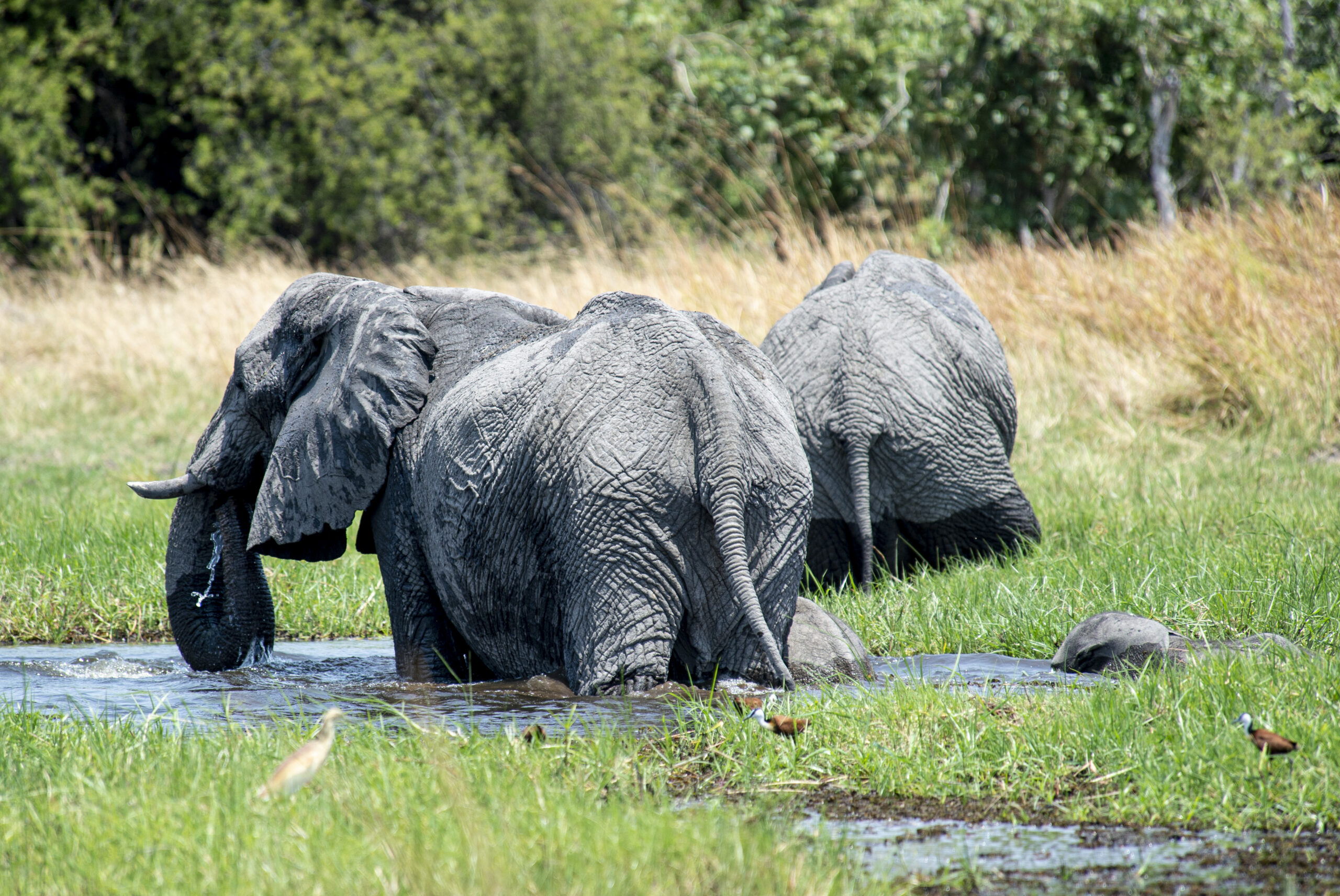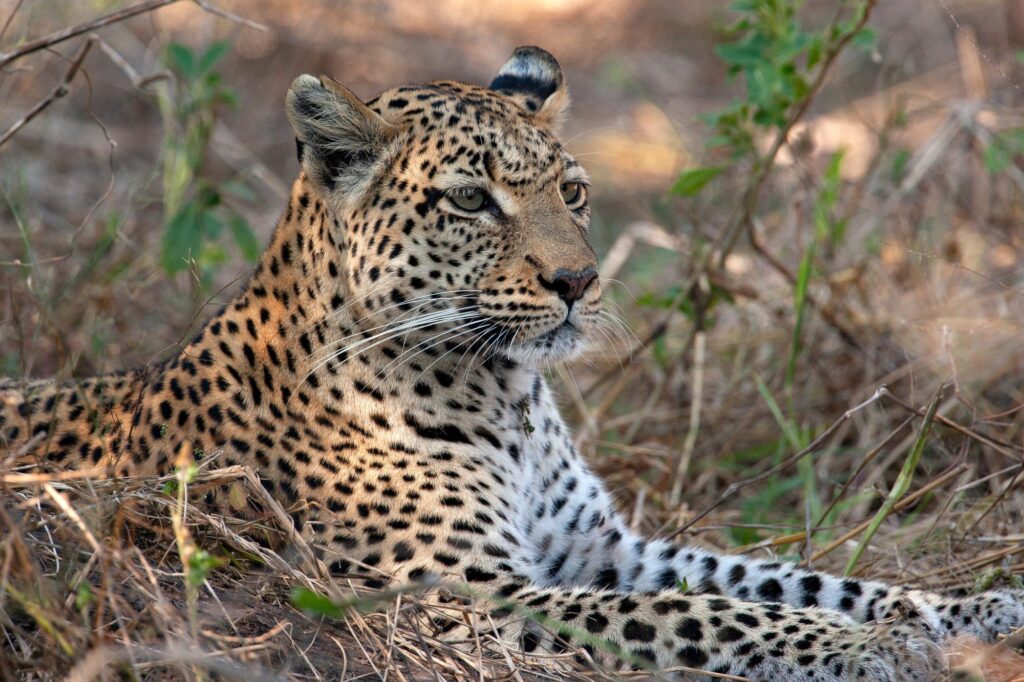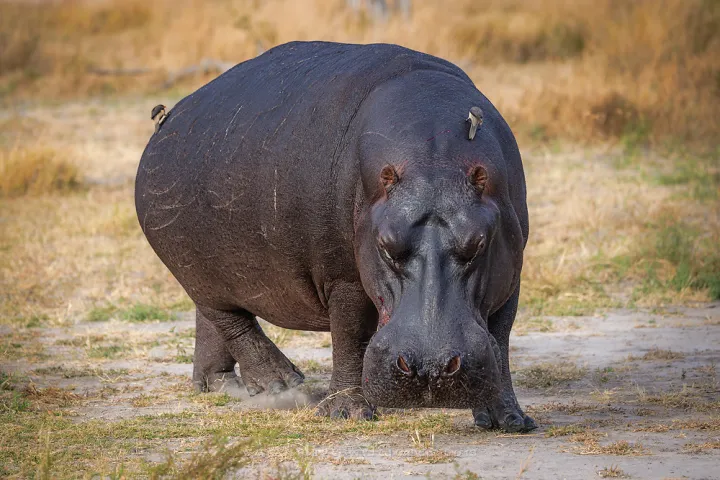The staggering statistics on the African Elephant population provided by the IUCN Red List regarding the decline of both African elephant species are alarming and serve as a wake-up call to conservationists and policymakers around the world.
With African forest elephant numbers plummeting by over 86% in just 31 years and African savanna elephant populations decreasing by at least 60% in the last half-century, urgent action is needed to protect these iconic animals from extinction. The fact that both species are now classified as endangered and critically endangered underscores the grave threats they face, including poaching and habitat loss.
Countries must come together to address the root causes of these declines, such as strengthening anti-poaching measures and expanding protected areas for elephants to thrive. The examples set by some African nations in successfully reversing elephant populations show that it is indeed possible to turn the tide on this crisis.
By working collaboratively and implementing effective conservation strategies, we can ensure a brighter future for Africa’s elephants and preserve their crucial roles in ecosystems, economies, and our shared global heritage.
In this article, we look at The African Elephant, its characteristics, its role in the African ecosystem, and why it’s important to keep these species protected.
What is the African Elephant?
The African elephant, the largest land mammal on Earth, is a majestic and iconic symbol of the African wilderness. These incredible creatures play a crucial role in their ecosystems and are admired worldwide for their intelligence, social structure, and sheer size. However, despite their significance, African elephants face numerous threats that endanger their populations.

African elephants are crucial to maintaining the biodiversity of their habitats. Their presence helps to create suitable environments for many other species, as they play a key role in seed dispersal and germination.
In central African forests, up to 30 percent of tree species rely on elephants to spread their seeds and help new plants grow. Without elephants, these trees may struggle to reproduce and maintain healthy populations, leading to a loss of biodiversity in the ecosystem.
Physical Characteristics
African elephants are the largest land animals on Earth, slightly larger than their Asian cousins. They can be identified by their larger ears, which resemble the shape of the African continent, whereas Asian elephants have smaller, rounded ears.
African elephants are known for their impressive size, with males reaching up to 12 feet in height and weighing between 10,000 to 14,000 pounds. Females are smaller but still formidable, standing up to 9 feet tall and weighing around 7,000 to 9,000 pounds.
An elephant’s trunk is a long, versatile nose used for smelling, breathing, trumpeting, drinking, and grabbing things—especially potential meals. The trunk alone contains about 40,000 muscles. African elephants have two finger-like features on the end of their trunk, allowing them to grab small items, whereas Asian elephants have just one.
African elephants of both genders have tusks that have elongated teeth that grow continuously. Savanna elephants have tusks that curve, while forest elephants have straight tusks. Their tusks are used for various tasks such as digging for food and water, as well as stripping bark from trees. Male elephants have larger tusks than females, which they use for battling each other.
Habitat and Distribution
Scientists have identified two separate species of African elephants, the savanna and forest elephants, both facing the threat of extinction. Savanna elephants are found in sub-Saharan Africa’s plains, while forest elephants reside in the forests of Central and West Africa.
The African savanna elephants are listed as endangered and forest elephants as critically endangered by the International Union for the Conservation of Nature. African elephants are present in 37 countries in sub-Saharan Africa, occupying diverse habitats ranging from East African savannas to Central and West African forests.
They are highly adaptable, living in diverse habitats including grasslands, woodlands, and deserts. The continent’s northernmost elephants are found in Mali’s Sahel Desert, where a small, nomadic herd migrates in a circular route through the desert in search of water.
The Best Places to Find The African Elephant
Botswana is a prime destination for elephant enthusiasts, with a thriving population of over 130,000 elephants roaming freely in the country’s diverse landscapes. Here are some of the best places to see African elephants in Botswana:
1. Chobe National Park
Known for having one of the highest concentrations of elephants in Africa, Chobe National Park is a must-visit destination for elephant lovers. Take a safari along the Chobe River to witness herds of elephants drinking, bathing, and playing in the water.
2. Moremi Game Reserve
Located within the Okavango Delta, Moremi Game Reserve is another fantastic spot to see African elephants in their natural habitat. Keep your eyes peeled for these gentle giants as you explore the diverse ecosystems of the reserve.
3. Savuti Marsh
This seasonal marsh in Chobe National Park is a hotspot for elephant sightings, especially during the dry season when large herds congregate around the water sources. Take a game drive or boat cruise to witness these magnificent animals up close.
4. Linyanti Wildlife Reserve
Bordering Chobe National Park, Linyanti Wildlife Reserve is home to a healthy population of elephants that roam freely throughout the reserve. Embark on a guided walking safari or game drive to see these majestic creatures in their natural environment.
5. Okavango Delta
The largest inland delta in the world, the Okavango Delta is a haven for wildlife, including African elephants. Explore the waterways and floodplains of the delta by mokoro (traditional canoe) or boat to spot elephants along the banks.
Diet and Feeding Habits
These herbivorous giants consume a wide range of vegetation, including grasses, leaves, fruits, and bark. An adult elephant can eat up to 300 pounds of food in a single day. They use their trunks to pull down branches, pluck leaves, and pick up smaller items, showcasing remarkable dexterity. Access to water is crucial, as elephants need to drink up to 50 gallons a day.
During the dry season, elephants use their tusks to dig up dry riverbeds and create watering holes for various animals to drink from. Due to their large appetite, elephants are encountering humans more often.

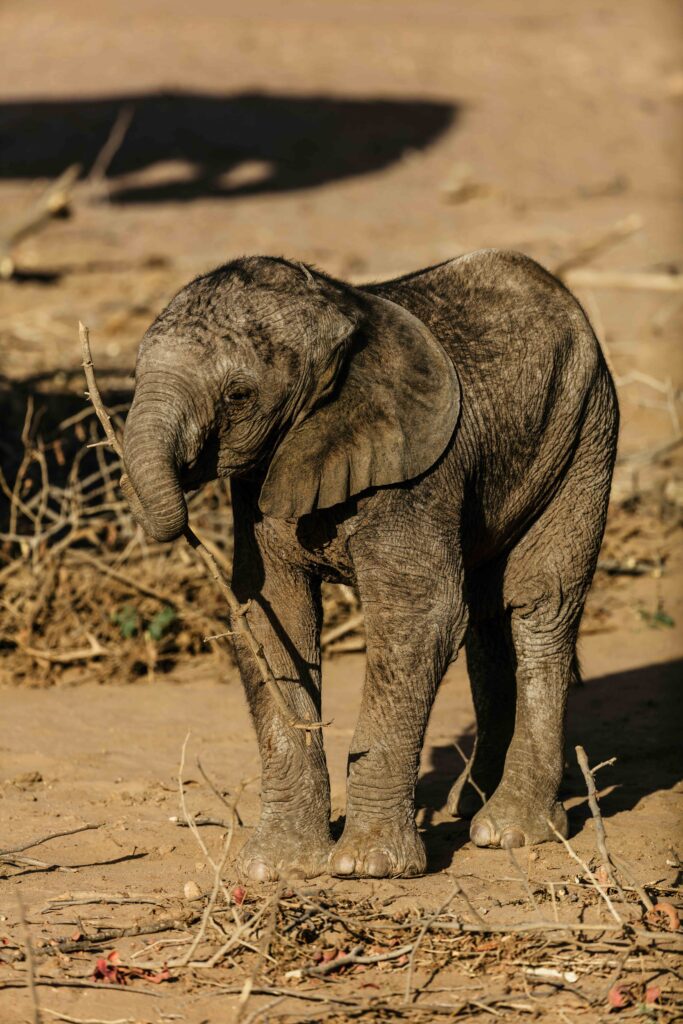
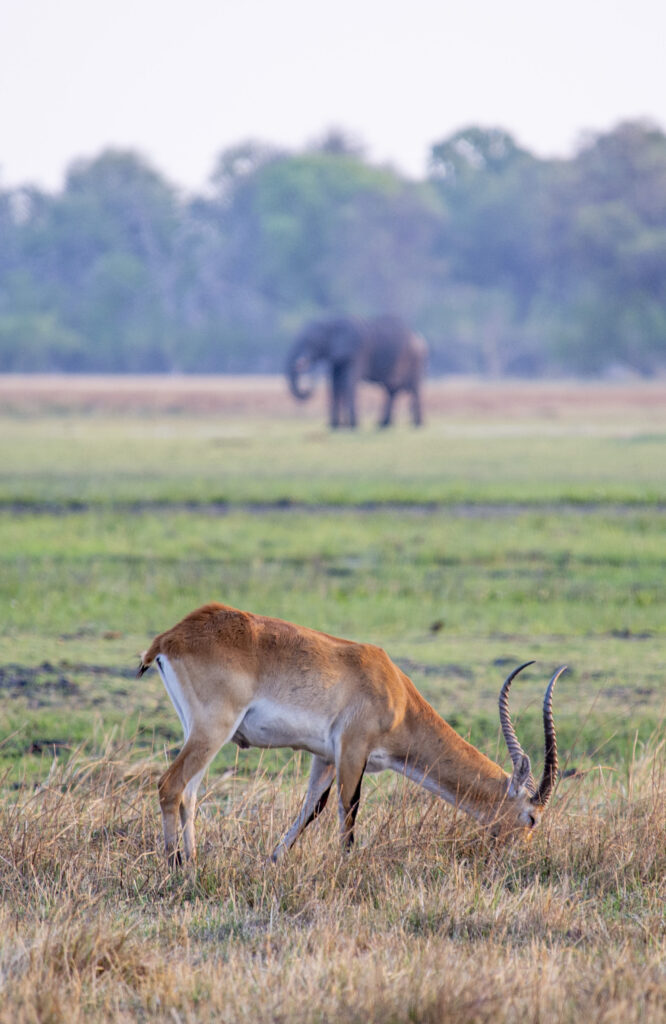
Elephants can cause significant damage to crops in a short amount of time, resulting in conflicts with farmers. Conservation programs collaborate with farmers to minimize crop damage and offer compensation for any losses due to elephant raids.
Social Structure and Behavior

African elephants are highly social animals, living in matriarchal family groups led by the oldest female. These groups consist of related females and their offspring, while males typically leave the group upon reaching maturity to live solitary lives or form bachelor groups.
Elephants communicate through a range of vocalizations, body language, and even seismic signals transmitted through the ground. Their social bonds are strong, with family members showing great care and cooperation, particularly in raising young calves.
Elephants live in female-led groups, with the biggest and oldest female serving as the matriarch. These groups consist of females, or cows, and their young. Adult males, or bulls, often roam on their own or in smaller, all-male groups.
Role in the Ecosystem
African elephants are considered keystone species because they have a crucial impact on their ecosystem. They are also referred to as “ecosystem engineers” because they influence their habitat in various ways.
Their activities contribute to biodiversity and the support of various species, ranging from insects to large mammals. Their dung contains seeds that aid in the dispersion of plants in the environment, and also create suitable habitats for dung beetles.
Their feeding habits in the forest and savanna play a vital role in creating pathways and maintaining open landscapes for other animals to thrive.
Conservation Status and Threats
Despite their ecological importance, African elephants are classified as vulnerable, with their populations declining due to poaching, habitat loss, and human-elephant conflict.
The demand for ivory has led to extensive illegal hunting while expanding human settlements encroach on their habitats. Conservation efforts include anti-poaching measures, habitat restoration, and community-based initiatives that promote coexistence between humans and elephants.
The illegal ivory trade is the most significant threat to African elephants. Before European colonization, Africa was home to around 26 million elephants. However, this number drastically fell to 10 million by the early 20th century due to hunting. The situation worsened over the years, and by 1970, only 1.3 million elephants remained.
From 1970 to 1990, intense hunting and poaching pushed African elephants closer to extinction, halving their population again. Recently, poaching continues to endanger both species of African elephants. Savanna elephant populations dropped by 30 percent between 2007 and 2014, while forest elephants saw a 64 percent decline from 2002 to 2011, particularly in Central and West Africa.
As a result, the current population of African elephants is estimated to be around 415,000, Botswana alone is home to about 130,000 which is half of the population is Southern Africa
Additionally, African elephants are losing their habitats as human populations grow and land is converted for agriculture and development. Elephants need large areas to live and thrive, and habitat destruction and fragmentation make it difficult for them to find sufficient food and water.
This loss of habitat also leads to increased conflicts with humans, as elephants often encroach on farmlands in search of resources.
Conservation Efforts
Recognizing African elephants as two separate species—savanna and forest elephants—marks a significant milestone for conservation. This distinction highlights the unique challenges each species faces, bringing much-needed attention to the critically endangered forest elephants, which have often been overshadowed by the more visible savanna elephants.
African elephants receive varying levels of protection across their geographic range and are safeguarded under international agreements such as CITES and the Convention on the Conservation of Migratory Species. Recent proposals to re-legalize the international ivory trade have been unsuccessful, thus maintaining the ban and providing ongoing protection for these majestic creatures.
Conservation groups and governments are actively working to set aside protected lands for wildlife, including creating corridors that connect these areas. Despite these efforts, researchers estimate that up to 70 percent of elephants’ range remains unprotected, leaving them vulnerable to threats.
Curbing poaching is crucial for the survival of African elephants, and addressing the illegal ivory trade is key. Advocacy campaigns target both the supply side (poaching) and the demand side (ivory consumers).
Significant progress has been made in recent years, particularly on the demand side. For instance, China, once the largest market for ivory, implemented a near-complete ban on the domestic trade of ivory in 2015. Since then, public demand for ivory has reportedly declined.
Protecting elephants from poaching also requires a local, community-based approach. A 2019 study revealed a link between the well-being of elephants and the socio-economic conditions of nearby human populations.
Regions with high levels of poverty and corruption tend to have higher poaching rates. This finding suggests that supporting communities in developing sustainable livelihoods can reduce the temptation to engage in poaching, benefiting both humans and elephants alike.
Organizations Making Efforts toward Elephant Conservation
African Elephant Conservation Fund
The African Elephant Conservation Fund plays a crucial role in protecting the iconic African savanna and forest elephants, as well as their habitats. Through collaborative efforts with national governments, U.S. agencies, and various partners, the fund implements strategic and effective conservation initiatives across the 37 elephant range countries in Africa.
These activities not only aim to prevent poaching and illegal wildlife trade but also focus on conducting research, monitoring populations, developing ivory action plans, and addressing human-elephant conflict.
By supporting a diverse array of conservation efforts through the African Elephant Conservation Fund, the U.S. Fish and Wildlife Service’s International Affairs Program is making significant strides in safeguarding the future of African elephants.
The fund’s results-based approach ensures that resources are allocated efficiently and effectively to address key threats faced by these majestic creatures. Through ongoing collaboration and innovative solutions, the fund is helping to ensure that African elephants continue to thrive in their natural habitats for generations to come.
Interesting Facts about The African Elephant
- Elephants have an excellent memory, which helps them navigate and remember the locations of water sources.
- They can communicate over long distances using low-frequency sounds called infrasound.
- Elephants mourn their dead and exhibit behaviors that suggest they experience complex emotions.
- Elephants use their ears to regulate their body temperature in the African heat. They shower by sucking water into their trunks and spraying it on themselves, then covering themselves with dust for protection.
- Elephants do not sleep much, roaming great distances while foraging for the large quantities of food that they require to sustain their massive bodies.
- Having a baby elephant is a serious commitment due to their long pregnancy of almost 22 months. Cows typically give birth to one calf every two to four years. Elephants already weigh around 200 pounds and stand about three feet tall at birth.
Conclusion
The African elephant is an extraordinary creature that embodies the essence of Africa’s wild landscapes. Protecting these magnificent animals requires global awareness and concerted conservation efforts.
By supporting initiatives that combat poaching and habitat destruction, we can ensure that future generations will continue to witness the grandeur of African elephants in the wild.
The recent surge in poaching poses a serious threat to elephant populations, especially in southern and eastern Africa where promising signs of recovery were starting to show.
The illegal ivory trade not only decimates elephant numbers but also disrupts entire ecosystems and threatens local communities that depend on wildlife tourism for their livelihoods. Conservation efforts must be stepped up to combat this crisis and ensure the survival of these magnificent creatures.
Education, law enforcement, community involvement, and international cooperation are essential pillars in the fight against poaching and illegal wildlife trafficking. Only through collective action can we protect African elephants and allow them to thrive once again in their natural habitats.
Visit Khwai Expeditions Camp
Nestled in the Khwai Community Concession, Khwai Expeditions Camp offers you an array of activities that will leave you looking to explore Khwai, and Moremi Game Reserve for an experience of a lifetime along the majestic African Elephant. You can make a booking to enjoy this wildlife abundance in the Kwhai area and Moremi Game Reserve.

